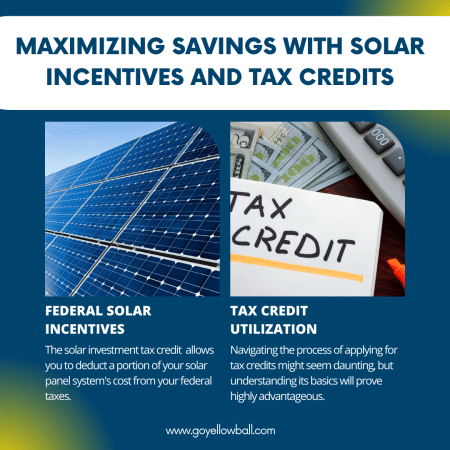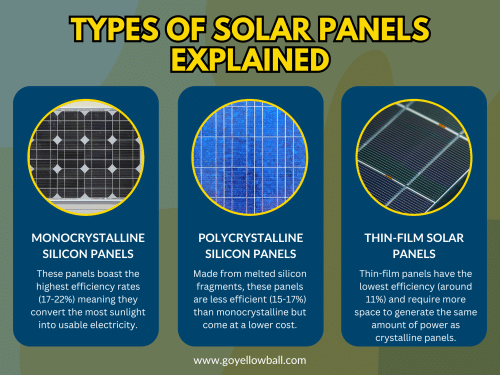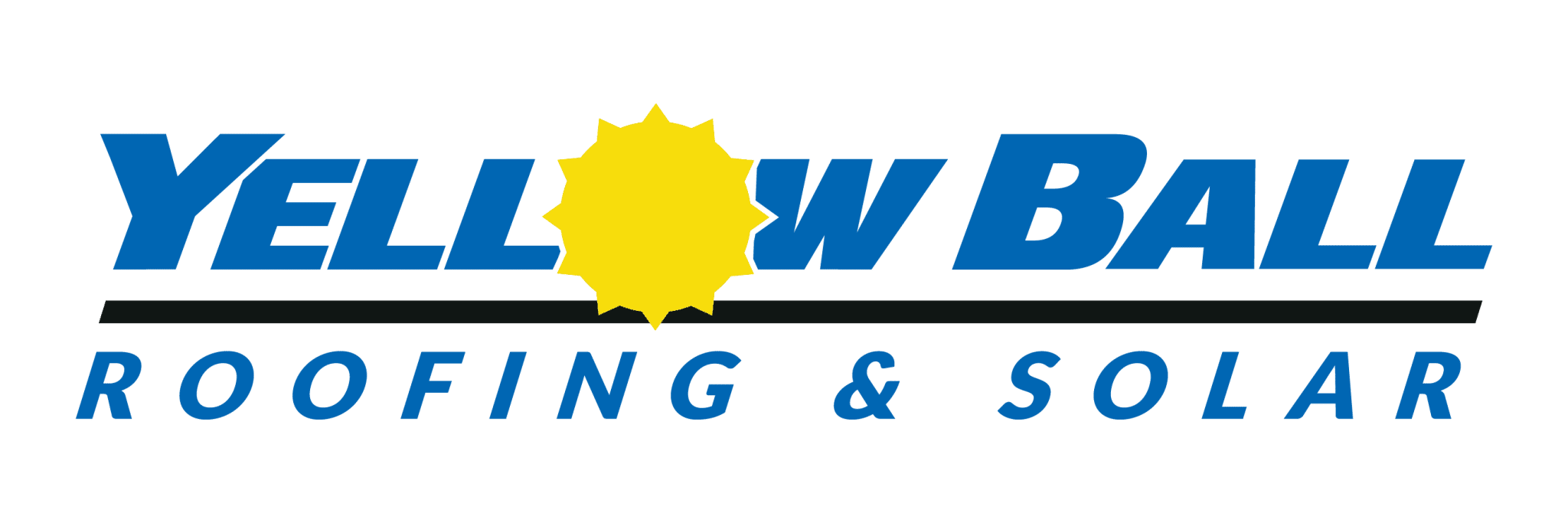Thinking of making your home more energy-efficient and planet-friendly? A “solar panel system for house” could be the game-changer you’re looking for.
Starting on this solar adventure, we will explore everything—from assessing your home’s eligibility for solar power to selecting the best panels and understanding the financial aspects of the installation.
Additionally, we’ll explore incentives and rebates that make the transition to eco-friendly energy easier and more financially accessible.
By the end, you’ll know about selecting a reliable installer, ensuring you’re set up for success in harnessing clean energy. Prepare yourself for a game-changer in powering your living space!
Ready to make your home a model of sustainability and efficiency? Contact YellowBall Roofing & Solar today and take the first step towards a greener, more cost-effective future.
Table Of Contents:
- Planning Your Home Solar Panel System
- Understanding Solar Panel Installation Costs
- Maximizing Savings with Solar Incentives and Tax Credits
- Financing Your Solar Panel System
- Types of Solar Panels Explained
- Selecting a Reliable Solar Installer
- State-Specific Considerations for Solar Installations
- FAQs in Relation to Solar Panel System for House
- Unlock the Potential of Solar for Your Home
Planning Your Home Solar Panel System
Assessing Your Home’s Solar Potential
Solar power starts with evaluating how well your home can tap into the sun’s electrical bounty.
Thanks to technological advancements, mapping services now offer a seamless way to estimate this capacity. With these tools, identifying the annual sunlight received on your rooftop becomes simple, a critical step in designing an effective home solar array.
In addition to the amount of sunlight, potential shade from surrounding trees or structures should be factored in, which could influence whether your house is suitable for solar panel installation.
This step is vital because the power generated by your system directly depends on how much sun it receives daily.
Choosing the Right System Size
Determining the optimal size for your solar panel system for house is more than just guessing; it involves careful calculation based on your household’s specific energy needs and consumption patterns.
We aim not only to fulfill the present power requirements but also to predict and prepare for any potential escalations in consumption. To navigate this process efficiently, consulting with experienced solar companies like YellowBall Roofing & Solar can make all the difference.
They have insights into local conditions and can help tailor a solution that effectively balances cost with output, ensuring you invest in a setup that meets both immediate and long-term energy goals without overspending.
Starting off strong in planning requires two critical steps: accurately assessing potential using available resources and choosing a fitting size based on detailed analysis rather than rough estimates.
The foundation of any successful transition towards clean energy at home lies within meticulous preparation tailored specifically to each residence’s unique requirements.
Understanding Solar Panel Installation Costs
When examining the financial side of solar panel system for house, it’s crucial to understand that costs are not just about buying panels.
Investing in solar energy goes beyond purchasing panels; it also covers the costs of equipment and installation services, among various other considerations.
Understanding the factors influencing these costs can help you better plan your financial strategy.
Solar Panel Cost Factors
Most people’s attention is often drawn to the initial cost. However, the total expense involves more than just the panels themselves.
The cost of hardware includes critical components such as inverters and support gear. Professional installation services are included in the labor charges to ensure that your system functions efficiently and safely.
By offering comprehensive electrical plans, we greatly simplify the installer’s job and ensure they have precise directions to follow.
Panel Installation Process
Each residence demands a tailored approach to setting up solar power solutions. Understanding the steps involved helps simplify the process.
Assessing your home’s potential for generating solar electricity requires mapping services designed to estimate capacity accurately.
At this point, determining the optimal specifications for your home’s solar system becomes a precise decision based on actual energy requirements, rather than mere speculation or overly simplistic estimates.
Maximizing Savings with Solar Incentives and Tax Credits
Federal incentives and tax credits effectively lower the upfront expenses of adopting solar. Taking advantage of these financial incentives enables individuals to switch to renewable energy sources without breaking the bank.
 Federal Solar Incentives
Federal Solar Incentives
The solar investment tax credit (ITC) is one of the most beneficial federal solar incentives available today. It allows you to deduct a portion of your solar panel system’s cost from your federal taxes.
This perk has significantly eased the financial burden of adopting solar power for numerous families across the U.S. by reducing the upfront cost. Remember, savings vary based on location and system size, so it’s crucial to understand how these factors influence your potential savings.
Tax Credit Utilization
Navigating the process of applying for tax credits might seem daunting, but understanding its basics will prove highly advantageous.
The amount you save depends on several factors, including where you live and how big or small your installation is intended to be.
To maximize these benefits effectively, ensure proper documentation during every step towards transitioning into renewable energy sources, such as visiting reputable websites offering detailed guidance or consulting directly with knowledgeable professionals.
Financing Your Solar Panel System
Unlocking the best finance options for your solar energy system might significantly change the game. With so many options available, knowing each one is critical to make an informed selection.
Solar Loans and Monthly Payments
Solar loans offer a straightforward path to owning your system outright. They have fixed monthly payments, letting you budget easily over time. This option is simple: as you pay off the loan, any savings on electricity costs go straight into your pocket.
You’ll find that these loans often don’t require upfront payment, which means getting started with solar is more accessible than ever before. Exploring various solar financing plans could provide the perfect solution for those worried about high initial costs.
Leases and Power Purchase Agreements (PPAs)
If upfront costs are a concern or ownership isn’t your goal, consider leases or power purchase agreements (PPAs). These arrangements don’t usually require any initial investment and involve fixed monthly payments based on the power generated by your panels.
This approach offers predictability, but remember, it also means you won’t own the equipment directly. Over time, PPAs can still lead to lower overall electricity bills without worrying about maintenance or performance—your provider handles that.
No matter which route you choose – be it through direct ownership via a loan or opting for less responsibility with a lease/PPA – doing so will propel you towards energy independence while potentially saving money in long-term electricity costs.
Types of Solar Panels Explained
Choosing the right solar panels is crucial for maximizing your home’s energy production and savings. This guide will break down the three main types of solar panels to help you make an informed decision.
 Monocrystalline Silicon Panels
Monocrystalline Silicon Panels
These panels boast the highest efficiency rates (17-22%) meaning they convert the most sunlight into usable electricity. This means fewer panels to achieve your desired energy output, potentially saving on roof space.
They are easily recognizable by their uniform black color and rounded corners, adding a sleek aesthetic to your home. Monocrystalline panels are the most expensive option due to the high-purity silicon used and the intricate manufacturing process.
Polycrystalline Silicon Panels
Made from melted silicon fragments, these panels are less efficient (15-17%) than monocrystalline but come at a lower cost. This makes them a good option for homeowners prioritizing affordability.
While slightly less efficient, they can still deliver enough power for most households, requiring a comparable amount of space to monocrystalline panels.
Polycrystalline panels may experience slightly higher efficiency degradation over time compared to monocrystalline.
Thin-Film Solar Panels
These panels are constructed with a thin layer of solar material deposited on a substrate. They are lightweight and flexible, making them ideal for unconventional roof shapes or integration into building materials.
Thin-film panels perform better in low-light conditions than crystalline panels, which can be beneficial for homes with partially shaded roofs.
While versatile, thin-film panels have the lowest efficiency (around 11%) and require more space to generate the same amount of power as crystalline panels. They may also have a shorter lifespan.
Choosing the Right Panel for You
The best solar panel for your home depends on your budget, roof space, and energy needs. Here’s a quick guide:
- Prioritize efficiency and aesthetics? Monocrystalline might be the perfect fit.
- Looking for a balance of affordability and performance? Polycrystalline could be your answer.
- Have a unique roof or value versatility? Thin-film panels might be worth considering.
Remember, this is just a starting point.
Consulting with a solar company like YellowBall Roofing & Solar can help you determine the best panel type for your specific situation and maximize your home’s solar power potential.
Selecting a Reliable Solar Installer
Finding the right company for your solar panel installation is crucial. Securing panels on top of your rooftop is one thing, but guaranteeing their enduring efficacy and longevity is entirely different. Here, we’ll guide you through what to look for in a quality installer.
Understanding the Installation Process
Navigating the road of solar panel installation takes one from basic blueprinting to securing essential approvals to the final setup. A reliable installer will have a clear timeline and inform you at every stage.
They should also provide detailed electrical schematics to understand how your system integrates with your home’s electrical setup. From design to installation, experienced technicians will be your trusted advisors throughout the process.
They’ll answer your questions, troubleshoot challenges, and ensure your system meets all local regulations. This expertise guarantees a well-designed system that works flawlessly for your home.
Evaluating Quality Equipment
A top-notch solar project isn’t just about labor; it’s equally about using quality equipment, including the solar panels themselves, inverters, and mounting systems.
Your installer should be able to explain why they recommend specific brands or types of equipment over others based on efficiency, durability, and warranty coverage.
A seasoned installer will explain how each part, from panels to inverters, enhances your solar setup’s efficacy and maintains affordability without sacrificing quality.
Finding Experienced Installers
Selecting an installer with experience is critical to ensuring that all expectations are met—from start to finish.
Recommendations from friends or online reviews and testimonials can point you toward professionals who have successfully completed numerous installations similar in scale and complexity to yours.
This hands-on knowledge proves invaluable throughout the design permitting stages, especially when dealing with unexpected challenges.
It effectively minimizes delays, safeguarding investment against common pitfalls associated with projects.
State-Specific Considerations for Solar Installations
When considering installing solar panels, it’s vital to recognize that where you live dramatically influences the practicality and perks of solar energy. Each state has its unique set of regulations, incentives, and sun exposure levels that can significantly impact your decision.
Understanding Regional Incentives
Local incentives complement federal tax credits in states like Wyoming and Montana to make solar investments more attractive. These financial perks are designed to lower the cost of installing a home solar system.
For instance, while the federal investment tax credit offers significant savings on installation costs nationwide, additional state-specific incentives can further reduce out-of-pocket expenses.
Sun Exposure Variances Across States
The potential power your solar panels generate heavily depends on how much sunlight they receive. Thus, geographic location is critical—states closer to the equator typically enjoy higher sun exposure rates than their northern counterparts.
This difference influences the size of the system you’ll need and the expected electricity production rates.
When planning for residential or commercial installations, knowing how factors like regional regulations, incentives, and sun exposure affect overall feasibility is essential before deciding to transition toward clean energy solutions through solar technology.
FAQs in Relation to Solar Panel System for House
How many solar panels are needed to power a house?
It depends on your energy use and sun exposure, but a home might typically need 20-25 panels.
How much is a solar system for a 2000 sq ft house?
The average cost before incentives kick in is between $15,000 and $40,000. The final price depends on needs and location.
What size solar system do I need to run my house?
To determine this, calculate your daily kWh usage. Most homes fit with systems ranging from 4kW to 8kW.
Can solar panels fully power a house?
Absolutely. With the right setup and conditions, you can cover all your energy needs via sunlight alone.
Unlock the Potential of Solar for Your Home
Getting on the solar journey means understanding your home’s potential for a solar panel system. It’s about choosing the right size, understanding installation costs, and maximizing savings through incentives.
Exploring payment methods makes solar power more accessible, and opting for high-performance panels alongside a trustworthy solar company guarantees enduring achievement.
In embracing clean energy with a solar panel system for house, you’re not just cutting electricity bills—you’re making an eco-friendly choice.
Remember: every sunlight power captured reduces reliance on fossil fuels.
Your journey towards a sustainable home starts here. Contact YellowBall Roofing & Solar for innovative solutions to make your home more energy-efficient.




